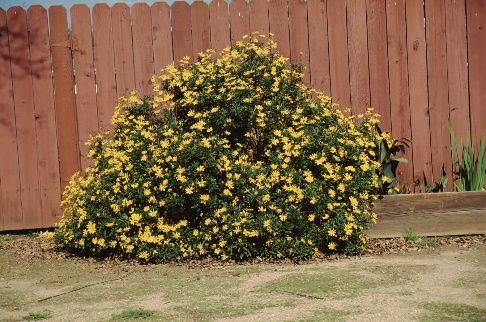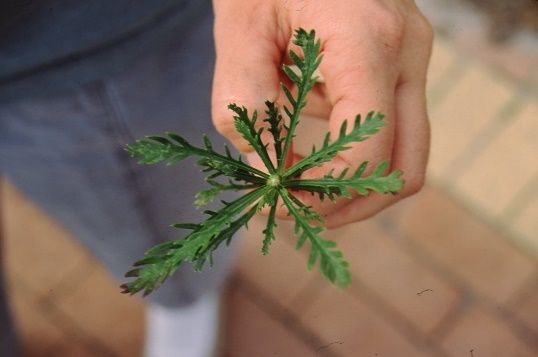Introduction
The cheerful, bright yellow flowers of African bush daisy are produced in great number throughout the year. The loose, rounded form makes a colorful tall ground cover, small shrub, or works well in mixed flower borders. The finely-divided leaves have a lacy, fern-like appearance.

Credit: Edward F. Gilman, UF/IFAS

Credit: Edward F. Gilman, UF/IFAS
General Information
Scientific name: Euryops chrysanthemoides
Pronunciation: you-RHE-ops kriss-santh-ee-MOY-deez
Common name(s): African bush daisy, daisy bush
Family: Asteraceae
Plant type: perennial; shrub; herbaceous
USDA hardiness zones: 8B through 11 (Figure 3)
Planting month for zone 8: year round
Planting month for zone 9: year round
Planting month for zone 10 and 11: year round
Origin: native to Africa
Invasive potential: not known to be invasive
Uses: mass planting; specimen; border; container or aboveground planter; foundation; attracts butterflies
Availability: somewhat available, may have to go out of the region to find the plant

Credit:
Description
Height: 2 to 4 feet
Spread: 3 to 4 feet
Plant habit: round
Plant density: dense
Growth rate: moderate
Texture: fine
Foliage
Leaf arrangement: alternate
Leaf type: simple
Leaf margin: lobed
Leaf shape: ovate
Leaf venation: pinnate
Leaf type and persistence: evergreen
Leaf blade length: 2 to 4 inches
Leaf color: green
Fall color: no fall color change
Fall characteristic: not showy
Flower
Flower color: yellow
Flower characteristic: year-round flowering
Fruit
Fruit shape: unknown
Fruit length: less than 0.5 inch
Fruit cover: dry or hard
Fruit color: unknown
Fruit characteristic: inconspicuous and not showy
Trunk and Branches
Trunk/bark/branches: not particularly showy; typically multi trunked or clumping stems
Current year stem/twig color: green
Current year stem/twig thickness: medium
Culture
Light requirement: plant grows in full sun
Soil tolerances: clay; sand; acidic; slightly alkaline; loam
Drought tolerance: moderate
Soil salt tolerances: poor
Plant spacing: 24 to 36 inches
Other
Roots: usually not a problem
Winter interest: plant has winter interest due to unusual form, nice persistent fruits, showy winter trunk, or winter flowers
Outstanding plant: not particularly outstanding
Pest resistance: long-term health usually not affected by pests
Use and Management
An excellent plant for dry conditions, African bush daisy requires full sun and occasional clipping to encourage dense growth. For this reason, another similar plant, Euryops pectinatus, is beginning to replace African bush daisy because it is more compact and flowers more. African bush daisy reseeds itself readily. Plant on 18 to 24inch centers to form a mass planting. They are often frozen to the ground in USDA hardiness zone 8b but resprout from the base in the spring.
Propagation is by seed.
Pest and Diseases
Nematodes are the biggest concern.